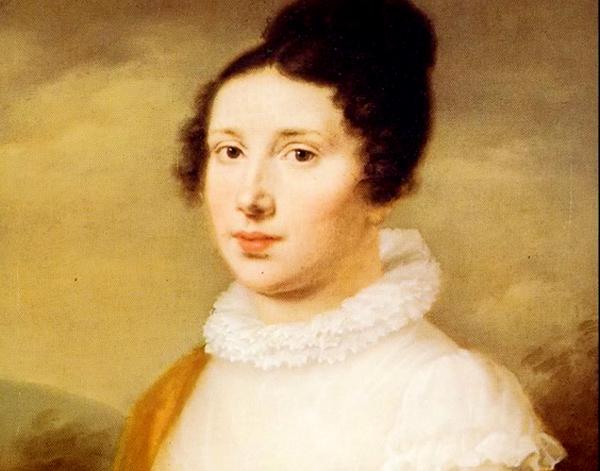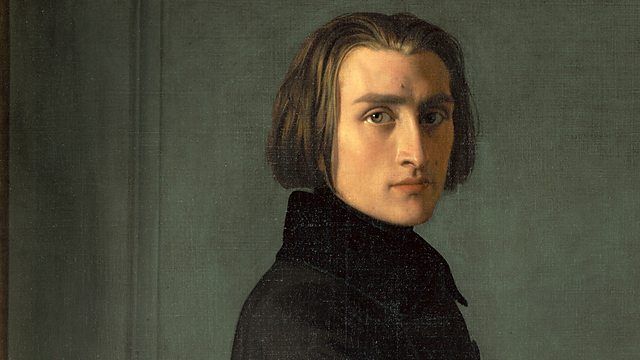A composer with a desire for an audience has to
be in possession of skills that have, on their surface, very little to
do with music. He (it was almost always a he) needs to be capable of
self-promotion, of fund-raising, of a kind of confidence that makes
others follow instructions. Arguably, it’s these adjacent abilities that
have been least encouraged in female composers. Then there is the
notion, intractable for centuries, that women could perhaps be talented
of body — with nimble fingers and a bell-like voice — but never of mind,
which is, of course, where composition originates.
Even if they’ve hardly ended up household names,
the women in this alternative history of composing are, quite frankly,
anomalies: people for whom ambition and talent coincided with privilege
and pedigree. Many had musically influential or well-connected fathers
and husbands; others had the support of powerful nobles. Changes in
geopolitics played a role in their success, as did quirks of history. As
Anna Beer writes in “Sounds and Sweet Airs: The Forgotten Women of
Classical Music”: “They did not seek out, or seek to create, a female
tradition, nor did they wait for a female teacher or mentor. They
invariably worked with, and within, a male-dominated musical culture.”
To read about their lives, and to listen to
their music, is to mentally catalog everything that went right for them —
and to imagine all the forgotten women for whom it must have gone
wrong.
Check out this playlist of female composers, who are often overlooked.
The Soul’s Struggle
Hildegard of Bingen, circa 1151

Hulton Archive/Getty Images
By the natural light from a single window, Hildegard of Bingen wrote books on medicine, botany and theology, and corresponded with penitents and popes. Born around 1098 and one of the first known composers in the Western tradition, she spent most of her life sequestered in a remote Rhineland monastery. Dozens of her compositions survive, all with original text, along with her magnum opus: a hypnotic liturgical drama called “Ordo Virtutum,” which tells the story of a struggle for a human soul between the Virtues and the Devil.
Hildegard experienced visions from the time she
was a young girl — Oliver Sacks speculated that she suffered from
blinding migraines — and people across medieval Europe knew her as a
prophet, “the Sibyl of the Rhine.” She claimed to have been uneducated,
and her letters suggest a compositional practice inspired only by faith.
“Hearing earthly music,” she wrote, “enables humans to to recall their
former state.” Her work remained cloistered, though; it’s believed that
none of it was ever heard outside her convent in her lifetime.
For a Court of Women
Francesca Caccini, 1625
February in Florence was Carnival season, and in 1625 the Medici court was celebrating a recent victory against the overextended Ottoman Empire, welcoming a visit from the Crown Prince Wladyslaw IV Vasa of Poland with opulent feasts and extravagant ceremonies. Francesca Caccini, a 36-year-old composer, was the architect of the day’s signature entertainment: “La Liberazione di Ruggiero Dall’isola d’Alcina,” a comic opera in four scenes, complete with dancing horses and other visual pyrotechnics and a fantastical plot involving warring and seductive sorceresses.
With its juxtaposed arias, canzonets and madrigals, the gynocentric and multifarious opera was the product of a historically exceptional period at the court, dominated first by Caccini’s original patron, Christine de Lorraine, the wife of Ferdinando I de’ Medici, and then by her daughter-in-law, Maria Magdalena of Austria. The original audience for “La Liberazione” was, as the musicologist Suzanne Cusick has written, well prepared to welcome the “representation of a fictional world ruled by exceptional women.”
The Composing Coquette
Barbara Strozzi, 1650s
Like that of many
if not most female composers throughout history, Barbara Strozzi’s
career was engineered by a man. Her adoptive father, the poet Giulio
Strozzi — many assumed Barbara was his illegitimate daughter — organized
salons at his Venice home, where he would invite important men to
debate philosophical and often prurient topics. Between discussions, the
teenage Barbara would perform suggestive musical interludes.
It wasn’t until her 30s that she began to
seriously and consistently compose her own music, a professional pivot
that can be read as an assertion of autonomy after a lifetime of
sexualized manipulation. The music she wrote could be overtly erotic —
voices interweaving to a sonic climax — and sometimes misogynistic in
its lyrics. It remains uncertain as to whether or not she was ever a
courtesan or even a concubine.
Private Performances
and Public Humiliations
Elisabeth Jacquet de la Guerre, 1694

Baptized Élisabeth-Claude Jacquet,
the composer now known as Élisabeth Jacquet de la Guerre was born in
Paris in 1665 to a family of artisans (her father was a master
harpsichord maker) whose craft allowed them access to the French
nobility. She was accepted into the court of Louis XIV as a teenager,
and her education and musical practice was overseen by Madame de
Montespan, the king’s most adored mistress.
As was common with many musicians at the time,
Jacquet’s career depended on the whims of her patrons, for whom she
performed in mostly private settings. Being at the mercy of a mistress
was even more precarious. And by 1694, when Jacquet staged “Céphale et
Procris,” her first opera, Madame de Montespan had been replaced by a
new, more religious mistress whose conservatism was already influencing
the court’s taste. Though Jacquet took the trouble to publish the work,
the production itself was performed only five or six times in Paris, to a
wan reception. Jacquet’s husband, himself a composer, is said to have
met with attendees the day after the premiere, telling them to stifle
any criticism. But she never composed another opera.
They Prefer Song
Marianna Martines, 1772

DeAgostini/Getty Images
The English music historian
Charles Burney visited Vienna in 1772, and on a Sunday afternoon in
September was greeted in a grand home by the Italian librettist Pietro
Metastasio. Letters were read aloud, compliments paid to mutual friends;
the conversation was pleasant and intriguing.
The tenor of the room shifted with the entrance
of a young woman, whom Burney would later describe as “well dressed,”
“graceful” and “very elegant.” It was the composer and harpsichordist
Marianna Martines, Metastasio’s pupil and protégée, who even as a child
was deemed skilled enough to play at the imperial court. The group of
men greeted her with great respect, and she proceeded to sing two airs
of her own composition. Her performance, Burney would write, surpassed
all that he “had been made to expect.”
In his account of the visit, Burney praises
Martines’s voice, her timing, her self-presentation. But he expressed
concern that the physical demands of composition — the sitting, the neck
craning — might mitigate her other talents. “It is a pity,” he wrote,
“that her writing should affect her voice.”
Backstage Grandeur
Louise Farrenc, 1850

In the middle of the 19th century, Paris audiences vastly preferred opera to instrumental music. But when Louise Farrenc’s Nonet in E-flat major had its premiere in 1850 — with Joseph Joachim, not yet 20 years old and not yet quite world famous, leading on the violin — the performance was met with ecstatic excitement. Alternating between winds and strings, the work is lively and bright; listeners enjoyed the way in which each instrument is given its own moment to shine.
Eight years earlier, Farrenc had been appointed
professor of piano at the Paris Conservatory — one of the first female
instrumental professors in Europe — and Farrenc parlayed her newfound
public success into a pay raise, demanding that her wages be equal to
those of her male colleagues. Her employers agreed, and Farrenc kept the
post for another quarter-century. In addition to composing and
teaching, she helped her husband, a music scholar and publisher, to
research and edit books, including a 23-volume anthology of keyboard
masterpieces. She continued the work after he died, organizing talks and
concerts to coincide with various publications. Her strategic
scholarship — intent on reviving and publicizing works of the past — was
unusual at the time, but such behind-the-scenes labor has in fact been a
large part of the work women have contributed over the centuries.
Touring and Torment
Clara Schumann, 1837

Hulton Archive/Getty Images
In the winter of 1837, Clara Wieck, a German piano prodigy turned teenage touring virtuoso, came to Vienna to give a series of concerts that lasted through the spring. The shows often sold out; excited crowds grew so congested that the police were called upon; and a torte was named after her.
She was a celebrity. In addition to her work on
the piano, she composed music that she would play at each recital — a
rarity for both men and women at the time. The fact that she toured at
all was in itself somewhat novel. By the 19th century, musicians who
once performed privately for their noble employers now gave public
concerts to larger, more diverse and more distant audiences, but it was
not a tradition friendly to women, for whom a life onstage and constant
transit were considered inappropriate if not impossible. Wieck was an
exception.
By the time she married her husband, the
composer Robert Schumann, and took his name, she was already world
famous — and only 20. She continued to perform for decades, through
relentless pregnancies and multiple miscarriages. And despite Robert’s
nervous breakdowns and possible syphilis infection, she believed his
opinion that she should retreat from composing.
“I once believed that I possessed creative
talent, but I have given up this idea,” she wrote. “A woman must not
desire to compose — there has never yet been one able to do it. Should I
expect to be the one?”




















